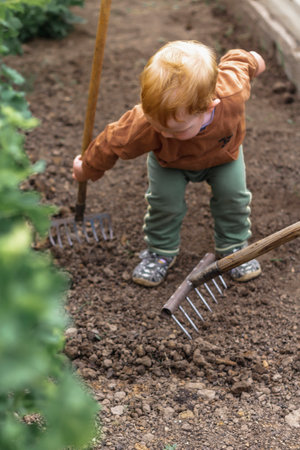Introduction to Composting in Indian Context
Composting has deep roots in the Indian way of life, especially among rural communities that have been practising sustainable and natural farming methods for generations. Long before the advent of chemical fertilisers, Indian farmers relied on traditional composting techniques such as “gobar khad” (cow dung manure) and “vermi compost” using earthworms to enrich their soil. These time-tested practices reflect a harmonious relationship with nature and are closely linked to India’s rich agricultural heritage. Today, as concerns about environmental sustainability and soil health grow, revisiting these indigenous composting methods has become more relevant than ever. By integrating traditional knowledge with modern awareness programmes in rural schools, we can empower the next generation to take pride in their cultural roots while embracing eco-friendly solutions. This not only benefits the immediate community by improving crop yields and reducing waste but also supports the larger vision of Swachh Bharat (Clean India) and Atmanirbhar Bharat (Self-Reliant India). Through education and practical demonstration, rural schools play a crucial role in reviving sustainable composting practices, making them an integral part of everyday life and inspiring positive change across Indian villages.
Importance of Environmental Education in Rural Schools
Integrating composting practices into the school curriculum is essential for fostering ecological literacy among children in Indian villages. Rural schools play a pivotal role in shaping the mindset of the younger generation, particularly as these communities are closely connected to agriculture and natural resources. By introducing composting as a practical component of environmental education, students not only gain theoretical knowledge but also develop hands-on skills that are directly relevant to their daily lives.
Fostering Ecological Awareness
Children in rural India are uniquely positioned to become agents of change within their communities. When environmental education is rooted in local practices like composting, it becomes more relatable and effective. Composting teaches children about the value of organic waste, soil health, and sustainable farming—concepts that directly impact their families’ livelihoods. Through such programmes, students learn to appreciate traditional wisdom while adopting scientific approaches to address modern challenges.
Key Benefits of Integrating Composting into the Curriculum
| Benefit | Description | Impact on Community |
|---|---|---|
| Practical Learning | Students engage in hands-on composting activities, reinforcing classroom lessons with real-life applications. | Encourages participation and problem-solving at home and in the village. |
| Sustainable Agriculture | Understanding how compost improves soil fertility supports organic farming initiatives. | Reduces dependency on chemical fertilizers and lowers input costs for farmers. |
| Waste Management | Teaches segregation and recycling of organic matter at the source. | Keeps villages cleaner and reduces landfill use. |
| Cultural Relevance | Connects scientific learning to traditional Indian farming methods like “khaad” preparation. | Preserves local heritage while promoting innovation. |
Building a Sustainable Mindset from a Young Age
Environmental education through composting empowers children with the knowledge and values necessary for sustainable living. It instills a sense of responsibility towards the environment, encouraging them to adopt eco-friendly practices both at school and at home. As these students grow into adults, they carry forward sustainable habits, ensuring long-term positive impacts on their communities and ecosystems across rural India.

3. Designing Culturally Relevant Awareness Programmes
Developing composting education initiatives in rural Indian schools requires a sensitive and holistic approach. The key to success lies in designing programmes that genuinely reflect local traditions, beliefs, and environmental practices. By integrating indigenous knowledge systems—such as traditional composting methods like “Nadep” or “Pit Composting”—educators can create relatable content that resonates with students and their families.
Understanding Local Customs and Values
A foundational step is to engage with village elders, teachers, and community leaders. Their insights into regional customs and agricultural cycles can shape the timing and format of awareness activities. Using vernacular languages and storytelling methods makes the learning process more accessible, ensuring that important messages about composting are well understood and remembered.
Respecting Indigenous Knowledge
Many rural communities in India have long-standing traditions of organic farming and natural waste management. Incorporating these practices into school programmes not only honours ancestral wisdom but also builds confidence among students. Practical demonstrations, folk songs, or theatre based on local experiences can effectively communicate the benefits of composting while preserving cultural heritage.
Addressing Unique Rural Needs
Programmes should be tailored to address the specific challenges faced by each community—be it water scarcity, crop diversity, or available resources for compost bins. Flexible lesson plans allow for adaptation based on seasonal work schedules or festivals, ensuring maximum participation from students and families. Encouraging children to involve their households helps extend awareness beyond school boundaries, fostering a shared sense of responsibility for sustainable living within the village ecosystem.
4. Hands-on Composting Demonstrations and Student Engagement
One of the most effective ways to build awareness about composting in rural Indian schools is through hands-on demonstrations and active student participation. Practical workshops not only help children understand the science behind composting but also foster a sense of responsibility towards their environment. By involving both students and teachers in these activities, schools can create a collaborative learning atmosphere that reflects traditional Indian values of community and shared effort.
Participatory Activities: Practical Workshops
During composting workshops, students gather organic waste from their homes, school canteens, or local markets—such as vegetable peels, dried leaves, and cow dung—to use as raw materials. Under the guidance of teachers or local agricultural experts, they learn step-by-step how to set up compost pits or bins. These sessions often include discussions in local languages, ensuring everyone understands each stage of the process.
Key Steps in a School Composting Workshop
| Step | Description | Local Example |
|---|---|---|
| Collection of Waste | Gathering biodegradable materials from school and community sources | Using banana leaves and leftover rice from midday meals |
| Layering Materials | Arranging green and brown waste alternately for balanced decomposition | Mixing neem leaves with straw from nearby fields |
| Watering & Turning | Maintaining moisture and aeration for healthy composting | Sprinkling water using traditional pots (matkas) |
| Harvesting Compost | Collecting mature compost after several weeks for use in gardens | Applying finished compost to grow seasonal vegetables like bhindi and brinjal |
School Garden Initiatives Led by Students and Teachers
The compost produced is then used in school gardens, where children plant native crops and flowers. Guided by teachers, students are assigned responsibilities such as watering plants, monitoring compost bins, and sharing progress reports during morning assembly. This participatory model encourages leadership skills among children while reinforcing the importance of natural farming methods rooted in Indian culture.
Cultural Significance and Community Involvement
These activities extend beyond the classroom as students share their knowledge with families during community meetings (Gram Sabhas) or through village eco-clubs. By highlighting traditional Indian practices—such as using cow dung or neem leaves—schools bridge modern environmental education with age-old wisdom, making sustainable living relatable to all generations.
5. Community Involvement and Intergenerational Learning
Encouraging Collaboration Among Students, Families, and Local Farmers
Composting initiatives in rural Indian schools thrive when the whole community is involved. By inviting students to work hand-in-hand with their families and local farmers, these programmes bridge the gap between classroom learning and real-life application. Many rural households already practice traditional composting methods such as “ghad” or pit composting. Schools can encourage students to document these home practices and share them in class, sparking curiosity and respect for local knowledge.
Honouring Wisdom from Elders
Our elders possess invaluable experience passed down through generations—especially in matters of soil health, natural farming, and resource management. Inviting grandparents, village heads, and experienced farmers to speak at school events or guide hands-on composting sessions fosters mutual respect. Such interactions not only honour indigenous wisdom but also strengthen the bond between young learners and their heritage.
Fostering a Sense of Shared Responsibility
When students, parents, teachers, and farmers collaborate on composting projects, it creates a sense of shared responsibility towards the environment. Initiatives like “Swachh Bharat Abhiyan” (Clean India Mission) have shown how collective action brings sustainable change. By celebrating small achievements—such as reducing waste sent to landfills or using school-grown vegetables in midday meals—the entire village becomes invested in nurturing Mother Earth. This spirit of togetherness is at the heart of Indian culture and ensures that the lessons of sustainability are carried forward by future generations.
6. Challenges and Success Stories from Rural India
Implementing composting initiatives in rural Indian schools is not without its unique set of challenges. Many communities initially face a lack of awareness about the benefits of composting, limited resources for setting up compost pits, and occasional resistance to change from traditional waste disposal practices. Some schools struggle with maintaining student engagement or encounter difficulties in sourcing organic waste consistently due to local dietary habits or seasonal variations.
Despite these obstacles, several rural schools across states like Maharashtra, Tamil Nadu, and Odisha have turned these challenges into valuable learning experiences. For instance, a government school in Maharashtra’s Satara district overcame initial hesitation by involving local farmers and panchayat leaders, who helped demonstrate the value of compost for kitchen gardens. Students took pride in collecting food scraps and dry leaves, turning them into “khaad” (compost) used to nourish their vegetable patches.
Another inspiring example comes from a tribal village school in Odisha. Here, teachers used folk songs and storytelling in Odia to teach children about sustainable farming and the science behind decomposition. This culturally-rooted approach made composting relatable and fun, leading to enthusiastic participation from both students and their families.
Across these projects, community involvement has proven critical. Many schools report that once parents witness the benefits—such as improved soil health, reduced waste burning, and better yields from “poshan bagicha” (nutrition gardens)—they adopt composting at home too. Local NGOs and self-help groups have also played an important role by providing technical guidance and helping set up low-cost vermicomposting units using cow dung and earthworms commonly available in Indian villages.
These success stories highlight that while challenges exist—ranging from infrastructural constraints to attitudinal barriers—they can be addressed through creative problem-solving rooted in local culture, peer learning, and consistent community engagement. Rural schools across India are showing that with determination and support, composting can become a catalyst for environmental education and grassroots sustainability.

